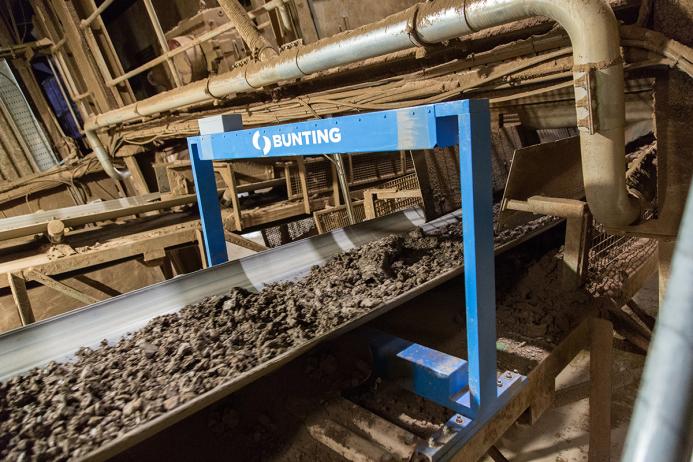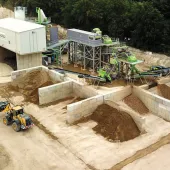A trio of Bunting metal detectors for Plasmor
Metal detection units help prevent damage to construction materials firm’s processing plant in East Yorkshire
PLASMOR have installed three new Bunting metal detectors to locate tramp metal and prevent damage to a processing plant at their Heck building block manufacturing site in East Yorkshire.
Established in 1959, Plasmor produce a wide range of innovative and high-quality building blocks for commercial, industrial, and residential construction projects across the UK. At its Heck site, the company uses an aggregate mixture of clay, Fuller’s earth (by-product from other industries), and recycled dust from the processing plant’s extraction systems to ensure operations are sustainable and that it follow circularity principles.
To help meet their zero-waste operational strategy, Plasmor specified and installed a trio of metal detectors from Bunting on three separate material handling conveyors.
On a primary 1.2m wide feed conveyor carrying quarried clay into the plant, Plasmor have incorporated a meTRON 05D tunnel metal detector. The conveyed clay is occasionally contaminated with damaging tramp metal which, if left undetected, could damage the company’s processing equipment over time.
The divisible tunnel-type meTRON 05D metal detector detects both ferrous and non-ferrous metals present in the clay. The sensitivity of the metal detector is adjusted to suit the application, focusing on the size and type of tramp metal that could cause damage to processing plant.
The unit’s divisible design also offers simple and quick installation without needing to cut the conveyor belt. In operation, tramp metal passing through the metal detector triggers a change in the detector’s magnetic field, which registers in the control panel.
The identification of tramp metal results in the stopping of the conveyor and the sound of an audible and visual alarm. Once detected, the problematic metal is manually removed.
The remaining two metal detectors – TN77 units – have been positioned on two separate conveyors handling clay prior to extrusion. These models were chosen for their reliability in detecting damaging tramp metal such as tramp iron and low-grade manganese steel (eg digger teeth), as well as being easy to install and simple to operate.
Both mounted on 0.8m wide conveyors, each handling approximately 15 tonnes per hour of clay, the sensitivity on the TN77 metal detectors is set specifically to find tramp metal that would damage the extrude.
As with the meTRON metal detector, tramp metal passing through the TN77s stops the conveyor and sets off a visual and audible alarm, allowing the maintenance team to find and remove the metal.
‘Tramp metal entering the extruder causes costly and time-consuming damage,’ commented Robert Whitlam, Plasmor’s clay operations manager. ‘Installing the metal detectors prevents such damage and the investment is recovered by stopping just one piece of tramp metal.’










